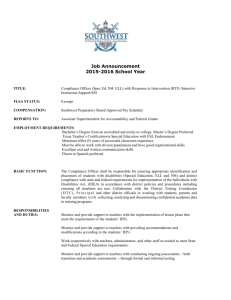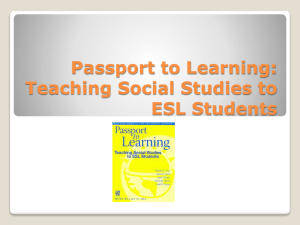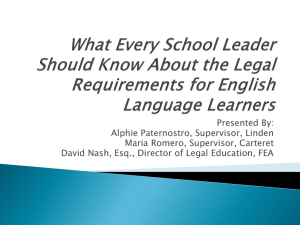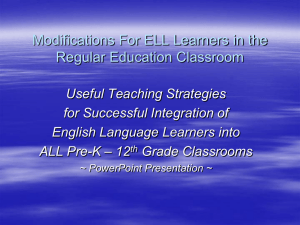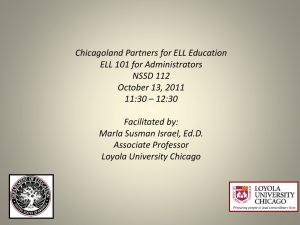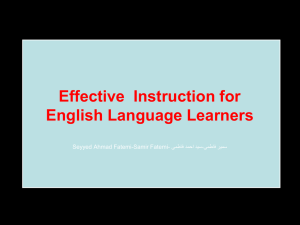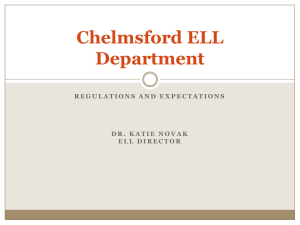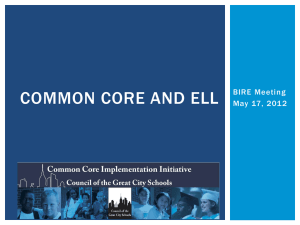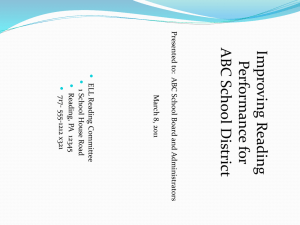Special Populations - High School District 214
advertisement
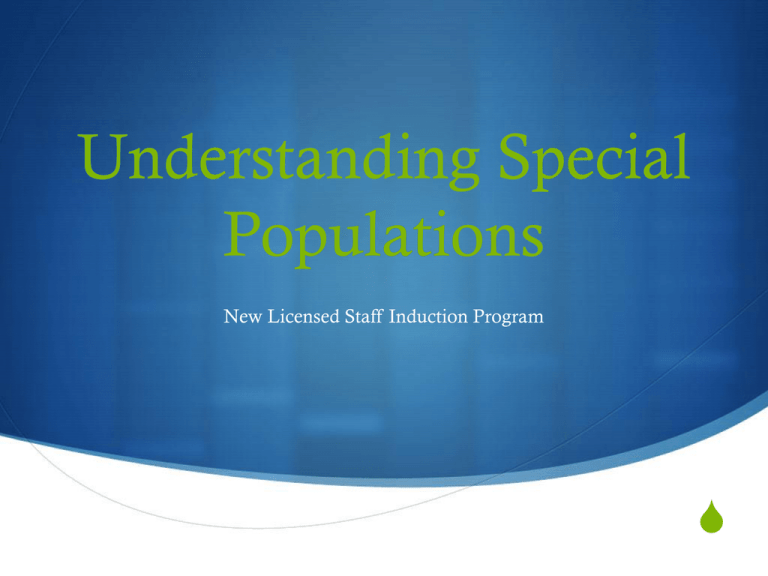
Understanding Special Populations New Licensed Staff Induction Program S Module Overview/Purpose S Through planning, support, and execution, District 214 requires that all staff become familiar with how to work with students in special populations (Special Education students and English Language Learners) Objectives S After today’s session, participants will have a better understanding of…. S different levels of services offered to special education students and how to access support within the school. S terminology used in the area of special populations. S ELL support and services. Types of Services for Special Education Students S Common services for special education students: S Counseling S Case Management S Speech Therapy S Social Work Common Accommodation and Modification Terminology S Common terms listed on the students IEP that must be provided in the classroom (general or special ed classrooms) S Extra time on tests/quizzes S Read Aloud S Alternate setting to take tests/quizzes S Frequent checks for understanding S Teacher notes provided S Walk by student desk every ___ minutes **This is just a common list, but may change based on student needs and the IEP (Individualized Education Plan) Who Can You go to for Help? S Case Manager - this is the person who would know the most about the student because of parent contact; they are responsible for writing the IEP S IR Coordinator – works with the entire IR team and would have some knowledge of the student S Counselor – works with the student regarding class schedule and other counseling needs Common Special Ed Acronyms S CD-Cognitive Disability S AUT-Autism S SLD-Specific Learning Disability S TBI-Traumatic Brain Injury S VI-Visually Impaired S APE-Adapted Physical Education S HI-Hearing Impairment S AT-Assistive Technology S (S/L)-Speech/Language Impairment S FBA-Functional Behavioral Assessment S ED-Emotional Disability S IEP-Individualized Education Plan S OHI-Other Health Impairment Commonly Asked Questions S What is a 504 plan? 504 is shorthand for Section 504 of the Rehabilitation Act. It is a civil rights statute that protects people with disabilities from discrimination. Anyone with a "physical or mental impairment, which substantially limits a major life activity," "has a record of such impairment," or is "perceived as having such impairment" can qualify as disabled under Section 504. Students who have 504 plans do not qualify for special education services (such as physical or speech therapy or classes taught by a special education teacher), but can receive modifications. Students with medical conditions such as depression, cancer, ADD or ADHD might receive modifications under this statute. Commonly Asked Questions S Why are some students with special needs in all regular classes, while others are not in the building at all? At a student’s IEP meeting, the Least Restrictive Environment (LRE) is determined. S There is a continuum of alternative placements, including S Reg. Education with weekly/daily monitoring from case manager S Reg. Education with special education services and supports included in that setting which are aligned with the general curriculum (co-teaching, alternative instruction, etc.) S Reg. Education with special education services provided for part of the day in a resource room or spec. ed classroom S Self-contained special ed classes S Alternative school S Residential treatment facility S Hospital S Detention facility S Homebound Commonly Asked Questions S How do I refer a student whom I think needs special services? S The first step is to try some modifications in the classroom. Seek out a Special Ed teacher if you are looking for ideas. Next, contact the counselor to find out if there are any external factors affecting their behavior or if other teachers have expressed the same concerns. The counselor will take it from there and request a screening if necessary. Common ELL Terminology S ELL – English Language Learner S ESL – English as a Second Language S ACCESS – A test taken every year by students in ELL to test English Language Skills S LEP – Limited English Proficiency S SIOP – Sheltered Instruction Observation Protocol (teaching model designed to support ELL students) ELL Placement S ESL Level 1 – These are students that understand and know little English S ESL Level 2 – These are students that have been in ESL 1 and moved up due to their increase in English skills S ESL Level 3 – These students are almost ready for the mainstream classes and have shown growth S LEP – This type of class can occur in any subject area and is meant for students that are moving into the mainstream classes, but need extra language support Commonly Asked Questions in ELL S Where can I get help if I have a student who is struggling with language issues? Buildings that have ELL services will have an ELL Coordinator or Division Head that can lead you to the right person for support. Also, any teacher that has ELL certification can offer suggestions. Commonly Asked Questions in ELL S When does a student exit ELL services? A student exits ELL services if they score high enough on the ACCESS score. According to ISBE, as of January 1, 2010, students who obtain an overall composite proficiency level of 4.8 as well as a 4.2 composite literacy (reading/writing) proficiency level (Tier B or C) on the annually administered state approved English language proficiency test, ACCESS for ELLs®, are to be considered English language proficient. Building-Specific Info. Questions/Comments S What questions do you have about the information presented today? S Is there a topic that you feel you need more information on? S Do you have any specific concerns at this time?
